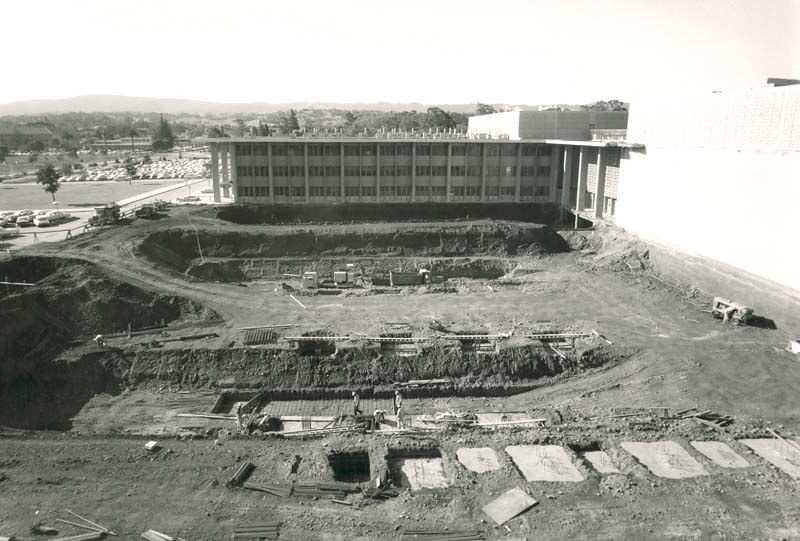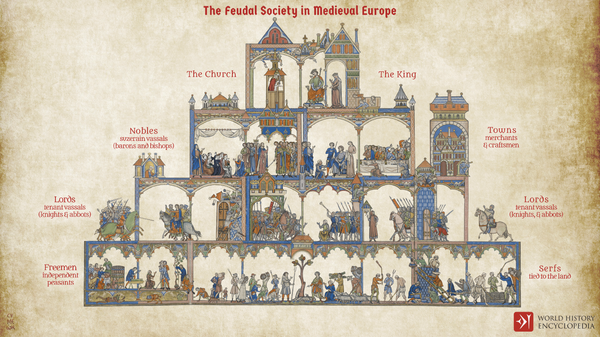YIMBYism for Colleges

Since 1980, the average price of tuition has risen over 1000%, far outpacing the rate of inflation. This presents a challenge for teenagers who are graduating high school and planning their next steps.
While college has historically led to an outsized increase in wages over time, students are now re-evaluating the benefits. In the wake of the COVID-19 pandemic, many colleges have closed for good and fewer students are sending applications.
What is the right path for colleges going forward? How do we ensure students are given a great education and the professional tools to succeed without filling them with debt that will take years or relying on executive action to get rid of? How do we ensure that every student feels welcome and able to thrive?
The answer to both lies in YIMBYism. The phrase “Yes In My Backyard” alludes to welcome new people in your community, whether that be a neighborhood or a university. At a time when many colleges might plan to shrink, growth may be the best, most equitable approach.
My alma mater shows a possible course for a better future.
Rowan University

Whenever I’ve been asked where I went to college, I dismiss them by saying it’s a small engineering school in New Jersey. Around the world few people have heard of Rowan University, though the people living in South Jersey can’t stop hearing about it.
Rowan’s growth has been staggering. I lived in Glassboro, the home of what was until very recently Glassboro State. It was a relatively small school with a few programs. The education program provided a steady flow of student teachers to the high school across the street. Glassboro State was never big. It didn’t have any recognition beyond its small corner of the state, even though it was the place of a major Cold War Summit between Johnson and Kosygin.
Everything changed when an engineer named Henry Rowan, CEO of Inductotherm, made a $100 million donation to Glassboro State to establish an engineering school.
When Mr. Rowan looked around for philanthropic opportunities at the end of his career, he briefly considered his alma mater, MIT. A university of that prestige has plenty of private donors. He reasoned that they might name a library wing after him. A donation of the same magnitude to a small state school, led the entire college to be renamed in his honor and in a few years students began graduating with engineering degrees.
As I grew up in Glassboro at this time, I began to see the effects firsthand. New academic buildings started going up. Large apartment complexes were built. A redevelopment project, called Rowan Boulevard, led to construction of new mixed-use development in a public-private partnership even as the country struggled through the Great Recession.
From Rowan University to President Houshmand

Rowan’s growth has been led by its president, Ali Houshmand. Since taking the role in 2012, he has taken strides to go from a small state school to a prestigious research university.
It has absorbed three local community colleges. Both Gloucester and Burlington County College have been renamed the Rowan College of Gloucester County and the Rowan College of Burlington County respectively. Cumberland County College has become the Rowan College of South Jersey. It has formed multiple medical schools in partnership with Cooper Hospital and Virtua Health and has a school for osteopathic medicine.
Rowan now has a dinosaur park. They’ve created the nation’s first accredited cannabis business program. In Fall of 2025, Rowan will welcome the first class of the state’s first doctorate of veterinary medicine program, becoming the second in the nation.

In my four years as an undergrad, I could see this astonishing growth. The student population grew by several thousand every single year. New buildings were opened for engineering and business students. Across the street from where I lived, I could see new student housing being built every morning.
Since then, they’ve added new restaurants, a science building, acquired existing buildings, and plan to grow further. This transformational leadership has impacted both the college, the town, and the county around it.

This growth has not come at the cost of student’s wallets, as tuition has remained nearly flat, much lower than the state average and close to inflation.This is a much different story from the majority of schools around the country who are pushing their students deeper into debt.
What’s the catch, you might be wondering. Has this massive growth meant that academics have suffered? No. In fact Rowan’s education has improved significantly. Its engineering programs are among the best in the nation.
Some of their success comes from outside investment and philanthropy. The dinosaur park was a philanthropic donation, and its upcoming medical school is a partnership with Virtua Health.
Programs that integrate universities, community colleges, and the existing private sector around it allow not just the college to expand while minimizing costs. It has been objectively good for the students. Rowan has received high rankings in social mobility, helping lower-income students get a great affordable education and connecting them with good-paying jobs.
Growing to improve inclusion
The practice of affirmative action is likely to get dismissed by Harvard after the Supreme Court rules of Students for Fair Admissions Inc. v. President & Fellows of Harvard College, in which the plaintiff seeks to dismantle racial preferences entirely as a method to admit students.
Studies have shown that programs to integrate Black Americans at colleges show strong benefits, finding “that AA increased black employment at all ranks by 4.5 to 6.2 percentage points relative to national trends”. Although this effect is not significant for other groups.
Race-blind admissions to Harvard may disproportionately harm Black students, and reward Asian students. Yet these groups should not be pitted against one another. Both compete to be a paltry 3% of the total applicants who are ultimately accepted.
With only 2,000 seats and 60,000 applications, people will see this as a zero-sum game. Students will burn out trying to juggle many extracurriculars to stand out. If a Black student gets accepted, an Asian student doesn’t. With this scarcity mindset, it is not surprising that people would be strongly protective of their seat.
When it comes to equitable education, does Harvard on the whole do a better job educating their roughly 300 Black students compared with the roughly 6600 Black students at the University of Central Florida?
Rather than relying on percentages alone, growing the student body at Harvard would allow for a greater number of people from diverse backgrounds to learn together. They could complement each other rather than competing.

Cambridge, Massachusetts is an old town with a lot of old buildings, but the university has found clever ways to expand. The Widener Library looks small, but includes ten underground floors that stretch out along the green.
Unlike South Jersey, the Boston area has a great subway system which already connects Harvard. Their recent Green Line Expansion cost just under $10 billion. That is a fraction of Harvard’s endowment. If there was a need for infrastructural improvements, it would not be hard to fund it.
Limits to growth
During my time in undergrad, many of us felt the strain of rapid growth. With the number of students increasing each year, the university would often see capacity problems.
That housing I photographed above had to be constructed to meet demand, and it still arrived too late.
My dorm room was a triple, straining the capacity of the tiny space so much we each received a $500 check for the burden. I was lucky, relatively speaking. Some students had to stay in a hotel as the university searched for capacity.
For commuters, parking has consistently been a problem. As parking lots turn into new buildings, students need to park farther away in fewer spots. Either they can walk or wait for a shuttle, but it’s not convenient.
More students connecting to Wi-Fi results in slower speeds. Trying to do anything was frequently frustrating. You’d have to spend a whole class period downloading some software and cross your fingers it would get done in time.
Construction meant loud noises early in the morning or long detours and unsightly lawns. Green spaces have been blocked off to make room for something new. There are plenty of tiny annoyances in growing fast. It’s an annual complaint in the student paper.
Yet growth is better than none. On the other side of the country, UC Berkeley was forced to cut admissions by residents of the city who complained that their college town had a lot of college students. Losing students means that the rest need to cover the budget shortfall. It means fewer opportunities to engage the local community. It means stagnation at a time when we need to solve the crises of our era and improve social mobility.
If Harvard is a great school, then it should be considered a failure that they only educate a small number of our nation’s brightest each year. As Harvard’s student population has stagnated, costs have soared. Tuition plus room and board is roughly $70,000. While many receive financial aid, those who don’t will wind up with staggering amounts of debt.

As Rowan’s student body grew, costs stayed low. The student population at Rowan grew much faster than the state average even while keeping tuition at a lower price than the average.
Impeding growth does not just hurt students, who are seeking an education, but the rest of the country too. How many job creators can’t start businesses because they never went to business school, or cannot hire enough skilled workers?
Conclusion
We need to say “Yes in my backyard”, not just for housing but for education. If we really believe that college is good, we should be investing not just in existing students but in expanding to more. We need to ensure that costs remain affordable and not burdening those just starting in their careers.
College students are often young, but one day they will be given the responsibility of helping the next generation of students. Community is more than focusing on today, but ensuring a better tomorrow.
We need more doctors and more teachers. We need more academic jobs for PhD graduates. We need to ensure more students reflect the diversity of the country without denying others from opportunities.
With school closures and population changes, it may be tough for university administrators to anticipate the future. Yet colleges will always be critical parts of the community, educating students and providing cultural enrichment. By leaning into what colleges do best, and welcoming more people, they will be able to meet the demand today and for our future.
Data and sources for charts can be found here
Featured image is Stanford Medical Center construction




